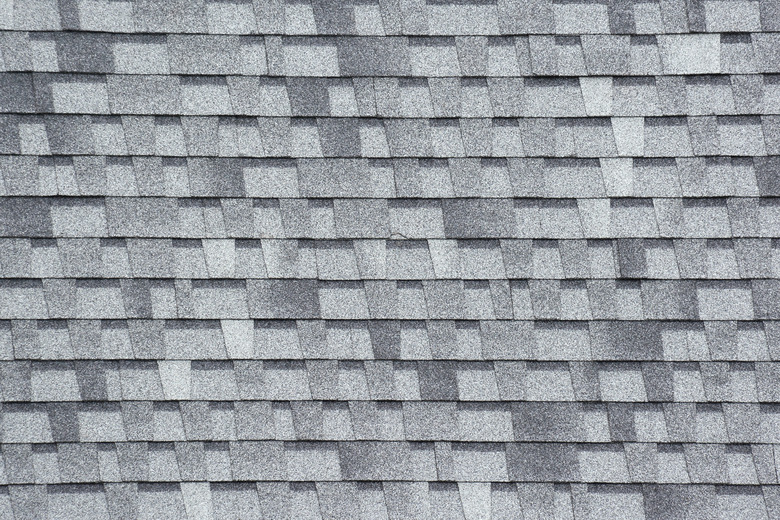Composite Roofing Shingles 101: Everything You Need To Know
Asphalt shingles are the most commonly used roofing materials in the U.S. because they are so much more affordable than natural materials like clay or slate tiles and wood shakes and shingles. While many people think three-tab shingles look cheap, there is an alternative between these basic asphalt shingles and more expensive roofing products: composite shingles. Also called architectural shingles, these thicker asphalt shingles are thicker and more durable than standard three-tab shingles. They can even mimic the appearance of clay, slate, or wood roofing materials —at fraction of the cost.
What Are Composite Roofing Shingles?
What Are Composite Roofing Shingles?
Although each manufacturer has its own formulations, many composite roofing shingles incorporate recycled rubber and plastics into the mix. All include polymers for strength as well as inhibitors to counteract the effects of ultraviolet radiation. The results are long-lasting products that can withstand high winds, hail, and the ravages of intense sunlight.
They can be molded to look like natural slate, wood shakes, or traditional Spanish clay tiles. The look is so realistic that some slate lookalikes have chisel marks, and those that mimic wood shakes feature deep graining patterns. It is difficult to tell them apart from the real thing, especially when viewing them on a roof from the ground. Some of the generic names used for these products include synthetic slate, synthetic shakes, plastic shingles, and more.
Features of Composite Roofing Shingles
Features of Composite Roofing Shingles
Composite products will vary from manufacturer to manufacturer, but in addition to looking like natural materials, they do share other qualities.
- Long-lasting. Composite products typically last 40 to 50 years, and they have 50-year as well as lifetime warranties. You can find the same life span on some high-end asphalt shingles, but most have a 20- to 30-year life span. By comparison, a natural slate can last 75 years or more.
- Fire resistance. Many products have Class A fire ratings, although some have Class C ratings. Class A shingles offer the best protection against fire.
- Wind resistance. Typical composite shingles can withstand wind speeds of 110 to 190 mph. By comparison, asphalt shingles start at 60 to 90 mph, but enhanced protection up to 130 mph is possible with specific installation requirements.
- Impact resistance. Most products have a Class 4 impact resistance rating, which is the highest. Impact resistance means the shingles can stand up to hail storms.
- Lightweight. Even though they may look like real slate, composite shingles are a fraction of the weight and are about the same as asphalt shingles, or 180 to 350 pounds per square. Some slate roofs can weigh over 1,500 pounds per square and require reinforced framing to support the weight.
- No mineral granules. Asphalt shingles rely on mineral granules to protect the asphalt from the UV rays of the sun and to provide color to the shingle. Should the granules wear away or fall off due to old age or hail damage, the asphalt becomes exposed, and leaks can develop. Composite shingles do not have a layer of granules because they are a solid product.
Cost of Composite Shingles
Cost of Composite Shingles
Depending on what you are comparing them with, the cost of an installed composite shingle roof can be either a drawback or a plus. Composite shingles cost about $500 to $1,500 per square. That's more — in some cases, much more — than an asphalt shingle roof. Three-tab asphalt shingles will cost about $350 to $450 per square. Even many high-end luxury asphalt shingles will cost less at about $550 to $850 per square.
If you are deciding between real slate and composite shingles, you can save with composites. Slate costs about $900 to $2,000 per square installed. Real Spanish clay tiles are in the same ballpark for the most part.
Wood shakes and shingles are on par with composite roofing materials. Red cedar shingles range from $500 to $950 per square. Cedar shakes, which are thicker and provide a more textured appearance, cost between $600 and $1,400 per square.
Composite Roofing System
Composite Roofing System
As with any roofing system, finding a good roofing contractor will help ensure the success of the installation. It's even more important with composite shingles because many roofers do not have experience installing the products, although composite manufacturers can help you find a qualified roofer in your area.
Installing a composite shingle roof does not require any special skills, but the nailing requirements are somewhat different than those needed for an asphalt shingle roof. Many products contain marked nailing locations, and some products require nailing along the side of the shingle as well as the top. The manufacturer's directions will provide instructions for laying out the roofing material and nailing. A wood-cutting blade on a circular saw or even a utility knife can cut shingles when necessary.
Composite roofs are built from the roof deck up and require the same underlayment and other accessories as asphalt roofs. In most cases, a metal drip edge is installed along the eaves and rake of the roof.
Self-adhered ice and water membrane, or ice shield, should be installed where required by the building code or at the direction of the shingle manufacturer. This material keeps water that works its way under the shingles away from the roof deck. Some manufacturers require ice shields over the entire roof on low-slope roofs but just along the eaves when the pitch of the roof is steeper.
A low-slope roof is one where the pitch, which is the measurement of the roof's vertical rise over 12 inches of horizontal run, is 3 in 12 or less. That means the roof rises 3 inches for every 12 inches of run.
Flashing that seals all openings created by roof penetrations are the same as with other roofing materials. Areas that require flashing include plumbing stacks, skylights, and chimneys or flues.

